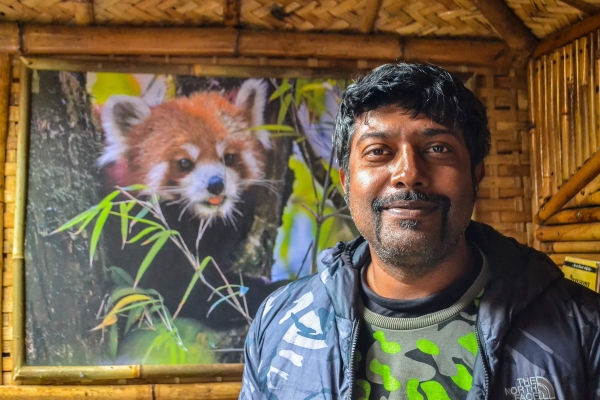
Shantanu is the director and project head of Habre's Nest, a wildlife travel enterprise on a mission to protect the red panda.

Shantanu is the director and project head of Habre's Nest, a wildlife travel enterprise on a mission to protect the red panda.
“I’ve had four years of experience in this region before we set up Habre’s Nest here in Kaiakata. Under the parent organisation Forest Dwellers, Habre’s Nest was our first project which is also rooted in sustainable tourism around rare species. While the red panda is our flagship animal, our intention is to protect the entire habitat. We undertake work where work is required but not enough is being done.
We decided to base our interventions here in Singalila because the belt extending from Nepal to the Indian states of Sikkim and Arunachal Pradesh onwards to Bhutan, Myanmar, and China, is the best remaining habitat for red pandas in the wild. Singalila can be considered the epicentre of red panda distribution and could play a vital role in enabling the fragments to connect.
We chose Kaiakata even though the weather can be harsh at times because the views are unobstructed and it is surrounded by greenery on the Nepal and Indian side of the border which increases the probability of sighting the red panda.
We've captured more than 4,000 photographs of wild red pandas over a period of four years through tourism and achieved 98 per cent sighting of the red panda for our guests since 2016.
Our goal is to assign this area the status of a red panda reserve, which would aid with conservation while continuing to track and document red pandas and hosting tourists who might be inspired to do something on their own. We want to continue working with government authorities towards improved regulation within and around the national park to minimise and eventually, eliminate the harm being caused by unregulated tourism.”
Read more about Habre's Nest here.